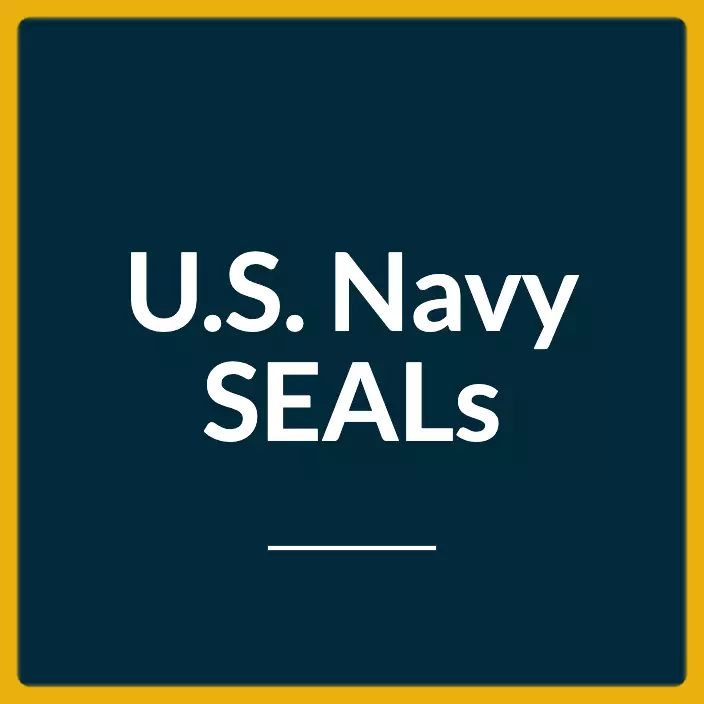Last Updated on November 16, 2023
This guide provides helpful information for those looking into joining the Navy as a Naval Aircrewman Helicopter (AWS) during the Fiscal Year 2024.
An AWS is like a superhero because they swim, fly, and save lives. Naval Aircrewmen are the people who run a helicopter from the cockpit.
They are the people who watch, carry weapons, swim, and save people. As an Aircrewman, you can drop off or pick up Navy SEALs and special warfare operatives, bring supplies to our ships at sea, or even jump into the water to save someone is life.
You could shoot down enemy planes one day and getting people off the ship the next.
Do you think you have what it takes to be our pilots’ eyes and ears?
Job Description

Naval Aircrewmen (Helicopter) (AWS) are Navy enlisted Sailors who are part of helicopter and Unmanned Aerial Vehicle (UAV) crews that work both at sea and on land.
AWS Sailors conduct Search and Rescue (SAR), Airborne Mine Countermeasure (AMCM), Tactical Evacuations (TACEVAC), Humanitarian Assistance and Disaster Relief (HADR), insertion and extraction of Special Operations Forces (SOF), Personnel Recovery (PR), Direct Action (DA), Anti-Surface Warfare (ASUW), Intelligence Surveillance Reconnaissance (ISR), Logistics Support (LOG), and aerial firefighting operations.
They control Crew-Served Weapons (CSW) and act as observers to make sure the flight is safe.
As an Aircrewman Helicopter, you will go on different missions all over the world and be put in charge of a sea or land squadron on almost any continent.
You will have the chance to work in a variety of places, from aircraft in the air to hangars, hangar decks to flight decks, and flight lines at air stations and on aircraft carriers.
Specific Responsibilities
Naval Aircrewmen Helicopter (AWS) are part of helicopter integrated tactical crews that can do more than one job.
Some of their jobs are:
- Taking care of administration, flight, and ground training for aircrew operations
- Moving goods inside and outside
- Getting people out of danger via Medical Evacuations (MEDEVAC)
- Transporting passenger and aerial gunnery
- Handling small arms
- Doing Naval Special Warfare (NSW) operations to insert and remove troops
- Putting Vertical Replenishment (VERTREP) into action
- Doing things with a Night Vision Device (NVD)
- Observer duties to make sure the flight is safe
Different Roles
Aircrew Readiness Manager (Helicopter)
Aircrew Readiness Managers (Helicopter) are important and integral parts of staffs, operational commands, and squadrons.
They make sure that the organization’s operational, administrative, and aircrew scheduling needs are met. They oversee and manage training programs and resources for naval aircrew.
They also oversee the standardization of aircrew training programs to improve proficiency and readiness, and they coordinate all aspects of aircrew training to meet the strict requirements of operational commitments around the world.
These managers oversee the programs for Search and Rescue (SAR) and Naval Air Training and Operating Procedures Standardization (NATOPS).
They are also in charge of tactics, training, readiness, ordnance and weapons, and training for aircrew.
As program managers, Aircrew Readiness Managers look at what training resources are needed, review and approve contract options for new training devices and programs, create and change curriculum, add and start new aircrew training programs, manage student quotas, qualifications, and certifications, and coordinate physical fitness and health program initiatives.
Helicopter Warfare Specialist
Helicopter Warfare Specialists are part of multi-mission helicopter and Unmanned Aerial Vehicle (UAV) crews that work in maritime and overland environments.
They operate mine hunting neutralization sweeping systems and provide logistics support.
They handle aircrew operations administration, flight/ground training, internal/external cargo movement, operating lifesaving/rescue equipment, passenger/patient transport, aerial gunnery, small arms handling, operating Night Vision Device (NVD), and observer duties for flight safety.
These tasks help directly with aircrew operations, training, and management in order to get and keep aircrew qualifications and certifications for the squadron.
Helicopter Warfare Specialists must be able to get a final top-secret security clearance.
Training Pipeline
After completing basic training at Recruit Training Command Great Lakes (also known as Navy Boot Camp), you will report for specialized training, which will include:
Naval Aircrew Candidate School
Naval Aircrew Candidate School (NACCS) at Pensacola, FL (6 weeks) for training in water and land survival, as well as flight safety. This course involves classroom lectures and group instruction.
Enlisted aircrew and rescue swimmer candidates are trained at the Aviation Enlisted Aircrew Training School (AEATS).
Naval Aircrew candidates must meet the following physical fitness standards to complete NACCS:
- Pass the Navy Physical Readiness Test (PRT) with a “good-medium” for their individual category
- Challenging daily calisthenics
- Jump from a 12 foot tower into a pool, then swim underwater for 15 yards with full flight suit
- Swim 75 yards in full flight gear (must perform sidestroke, backstroke, and breaststroke for 25 yards each)
- Swim one mile in full flight suit within 80 minutes
- Tread water for two minutes in full flight gear
- Complete three minutes of drown-proofing
- Float for five minutes with a life preserver
The training is physically tough, with topics such as aircrew tasks and assignments, survival, first aid, and water rescue procedures covered. Enlisted aviation personnel from the Navy and Marine Corps will eventually be deployed to fleet squadrons as Naval Aircrewmen with these skills.
Naval Aircrew Rescue Swimmer School
Naval Aircrew Rescue Swimmer School at Pensacola, FL (7 weeks) to learn Search and Rescue (SAR) swimming skills. This course involves classroom lectures and group instruction.
Naval Aircrew candidates must demonstrate the following physical fitness standards to complete Aircrew Rescue Swimmer School:
- Be at ease in a water surface and underwater environment
- Rapidly adjust to use diving mask, fins, and snorkel
- Be proficient in administering lifesaving medical procedures
- Pass the Rescue Swimmer Fitness Test:
- Four proper pull-ups within two minutes (wearing flight suit and boots)
- Carry a pair of 50-pound dumbbells
- Complete 42 proper push-ups within two minutes
- Complete 50 proper sit-ups within two minutes
- Complete a 400-meter swim (buddy tow) within 18 minutes
- Pass all in-course test evolutions:
- 35 minutes of vigorous daily runs
- 90 minutes of intense calisthenics
- Complete an 800-meter swim within 20 minutes
- Complete a 1,500-meter swim within 35 minutes
- Complete a 2,000-meter swim within 55 minutes
- Complete a 400-meter swim (buddy tow) within 16 minutes
- Complete an 800-meter swim (buddy tow) within 35 minutes
Applicants must recognize the details and benefits of volunteering for rescue swimmer training.
If they voluntarily discontinue their training as a rescue swimmer or otherwise fail to achieve the program’s requirements, they will be ineligible for automatic advancement to E4 and may be unable to remain in the Aircrew Program.
Following training will be determined by the Navy’s demands, performance at ARSS, training credentials, and the applicant’s personal desires.
AWS Class “A” Technical School
Candidates must then attend AWS “A” school at Pensacola, Florida for approximately 13 weeks where they learn basic aviation theory and develop skills for the specialized AWS rating. This course involves classroom lectures, group instruction, and workshops.
SERE School
Candidates must also attend SERE school in San Diego, CA or Brunswick, ME for approximately two weeks where they learn Survival, Evasion, Resistance, and Escape (SERE) techniques. This course involves classroom lectures and group instruction.
Fleet Replacement Squadrons
This training is conducted in different Naval Air Stations for approximately two to 18 weeks, depending on the aircraft type. This is where AWS Sailors learn specific aircraft systems through classroom lectures, group instruction, and workshops.
After Initial Training
Depending on your assignment, more training may be required. Before reporting for operational actions, AWSs can expect to undergo specialized training on specific aircraft or equipment pertinent to your mission.
Following training, you may be assigned to naval air stations, squadrons, aircraft carriers, or other aviation facilities in the United States or abroad. As an AWS, you may expect to spend around 50% of your time at sea.
Promotions are provided regularly. However, they are competitive and dependent on performance.
Advanced Training
Advanced training as an Aircrewman Helicopter may be possible later in your career. Navy Officer roles may be available for people with additional leadership aspirations and a college degree, allowing possibilities to lead and train others.
Qualifications to Join
To become an Enlisted Sailor in the Navy’s Flight Operations branch, you must have a high school graduation or equivalent. Those interested in working as an Aircrewman Helicopter must be United States citizens who meet the security clearance standards.
To be given a SECRET clearance, you must meet citizenship and character requirements, as well as meet reliability standards for assignment to the Personal Reliability Program (PRP as specified in SECNAVINST 5510.30).
Prior to beginning the training, all aircrew applicants must be able to swim. They should also have manual dexterity, physical strength, and a preference for working with tools and machinery.
They must be self-motivated and capable of working as a part of a team. An interest in ideas and knowledge, resourcefulness, curiosity, proficiency with tools, equipment, and machines, high manual dexterity, and teamwork are all beneficial characteristics.
This work requires normal hearing and color perception.
Specific Criteria
- Physical Fitness Requirement: Aircrew applicants must pass the Navy’s Physical Readiness Test (PRT) with a satisfactory-medium score for your age and gender while in the Delayed Entry Program (DEP) (refer to OPNAVINST 6110.1) Prior to taking the PRT, aircrew candidates must sign a Hold Harmless Agreement.
- Drug Usage Restriction: Because this program is inherently dangerous, the use of illicit or restricted substances is grounds for application rejection. Drug waivers will be accepted individually.
- Medical Requirements: Normal color and depth awareness, vision corrected to 20/20 in both eyes, and correction must be worn. Hearings are conducted under MANMED P-117, Article 15-92. There is no speech impairment allowed. MANMED P-117 Article 15-95 requires that all applicants take a “reading aloud” test. Minimum and maximum nude body weights for aircraft employment are 103 to 245 pounds, respectively. Hay fever, asthma, insect stings, food allergies, and severe motion sickness are all disqualifying factors.
General criteria may differ depending on whether you are currently serving, have previously served, or have never served.
ASVAB Requirement
When you are classified at NACCS, your ASVAB scores will be checked to ensure that you are qualified for a specific source rating. Applicants must score the minimum ASVAB score below to qualify to join the Navy as a Naval Aircrewman Helicopter.
- VE+AR+MK+MC=210; or
- AR+AS+MK+VE=210
The enlistment qualification requirements above are current as of Fiscal Year 2024, per the Navy Personnel Command. This information is not readily available to the public. So, contact your local Navy Enlisted Recruiter for the most current requirements to join the Navy as an enlisted Sailor.
More Information
If you wish to learn more about becoming a Naval Aircrewman Helicopter (AWS), contact your local Navy Enlisted Recruiter. They will provide you with more detailed information you’re unlikely to find online.
You may also be interested in the following related Navy Enlisted jobs:


